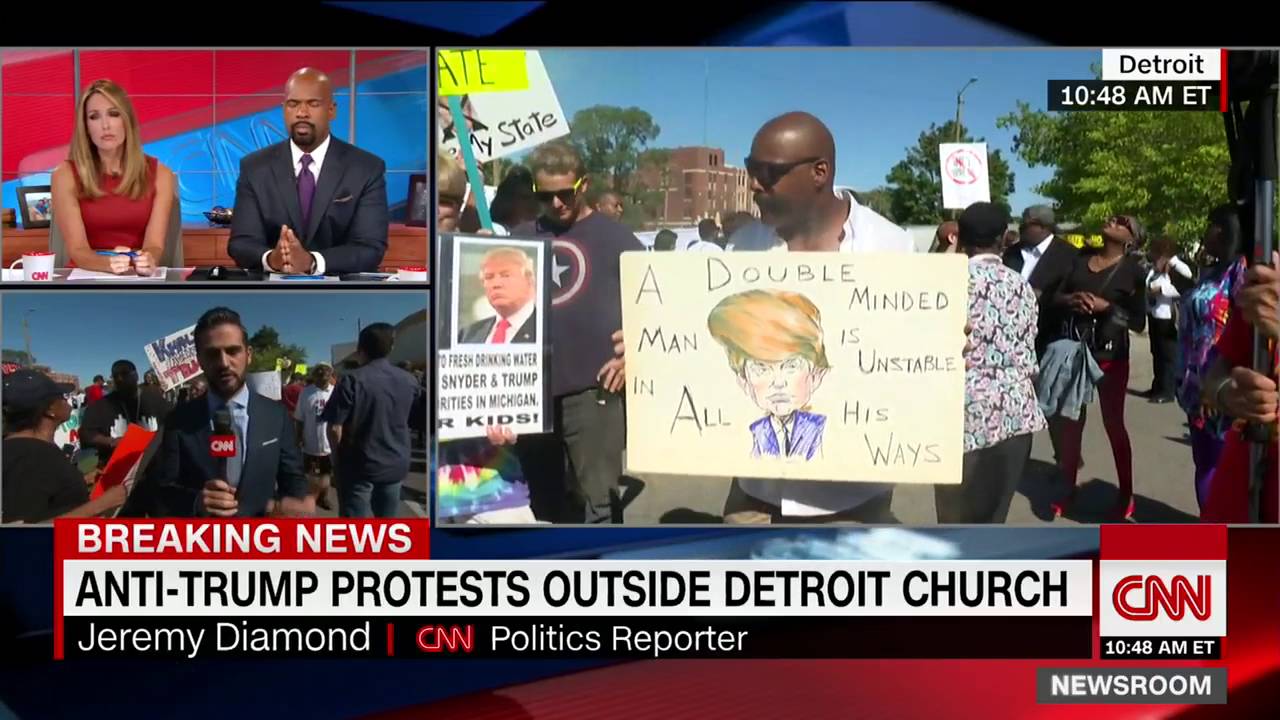By Brian Kirwin
Six months into the Donald Trump presidency and more than a few Democrats are wondering why they and their Party aren’t doing better.
While the nation’s eyes watched Georgia’s Sixth Congressional special election in June, Democrats, who spent the lion’s share of the $50 million-plus spent campaigning for this seat, managed to turn out 124,893 voters for John Ossoff. That’s lower than the 124,917 voters who voted last November for Democrat Rodney Stooksbury, who spent virtually nothing campaigning for the same seat.
Most would think a Democrat leading in months of polling with a record-setting special election war-chest who succeeds at turning out November-level numbers of voters in a special election should be a lock.
He wasn’t.
Republicans turned out, too, and in numbers close to what the previous Congressman got in an off-year contest in 2014. In the end, Republicans carried this district, and others, in districts that Republicans usually win.
If the Democrats are going to make the big comeback they’ve been talking about on MSNBC, they’re going to eventually need to win something. Special elections are usually the place to make an upset that turns into a trend.
This is a canary in coal mine moment for Democrats. At a point when it would be hard to see how less effective Democrats can be in an electoral sense, they are making a good case that they can move even lower down the ladder.
At the federal level, the Democratic Party enjoys its greatest influence and success, and that’s not saying much. In addition to capturing the White House, Republicans lead the House of Representatives with 241 members compared to 194 Democrats. Those Democrats are increasingly regional and coastal, with most of them clustered in New England, Mid-Atlantic and Pacific.
In the Senate, the Democrats’ peak of success, 52 Republicans lead 46 Democrats with 2 Democrat-caucusing Independents, and a good number of those Democrats are running for re-election in states Trump carried. 33 Senate seats are up in 2018, with 23 of them held by Democrats, 5 of them in states Trump won by over 20 points.
Let’s just say I don’t see the prognosis for Democrats in the Senate looking favorable.
It gets worse when you look at Democrats on a state level, where Democratic power is bordering on non-existent. There are 33 Republican governors plus 1 Independent (Republican) compared to 16 Democrats. This is the bench for the Democratic future, and it’s a short bench. It’s also the reason that the only real choices for the Democratic nomination for President were a failed primary candidate from 2008 and a socialist from Vermont who was elected to the Senate as an Independent. Gov. Martin O’Malley of Maryland couldn’t muster 1% in the Iowa caucuses.
What makes this tumble so remarkable is that Democrats controlled 70% of governorships three decades ago. Now the reverse is true and today’s Republican Party is at its gubernatorial post-Depression peak.
State legislatures show the same lack of Democrat strength, with Republicans at a 32-14 advantage plus Nebraska’s “non-partisan” legislature dominated over 2-1 by endorsed Republicans. The remaining three are split legislatures. 25 states, half the country, have both Republican governors and Republican legislatures.
Tough to see how the future for Democrats couldn’t be worse than the present.
Ronald Reagan used to tell a joke about two people living in the Soviet Union, and one asked, “Have we done it? Have we achieved full communism?” and the other said, “Heck, no. Things are gonna get a lot worse.”
They just might. They certainly will if they run campaigns like John Ossoff’s in Georgia.
As a Republican consultant, I’ll be thrilled if Democrats ignore my advice, but if Democrats want to end their losing streak, there are a few things that they must realize and do.
Republicans didn’t win solely because of Obama. Democrats won’t win solely because of Trump.
This is the most critical thing Democrats need to learn, and the one thing I expect them to never accept. It’s never all about a president. Republicans won the House and Senate right after Obama’s election, and the common misconception was that it was an Obama backlash with a Tea Party movement that the media branded as hateful, racist and bigoted. Wrong. Wrong Wrong.
Surely, Obama as President helped, but what fueled the flip was that Obama ran on many bipartisan themes focused on the middle class and the economy. Those middle class, suburban voters who carried Obama to the Presidency felt rejected by him. Instead, Obama was there to help people who bought giant homes they shouldn’t have been able to afford in the first place.
One month after Obama’s Inauguration, CNBC’s Rick Santelli gave his famous “tea party” speech saying, “How many of you people want to pay for your neighbor’s mortgage that has an extra bathroom and can’t pay their bills?….President Obama, are you listening?”
Suburbia rebelled, but they didn’t rebel against Obama as a person. They rebelled against being ignored. These voters also made Trump President and they didn’t do it because of who he was. It was because of what he promised to do. And the more Democrats attack Donald Trump because of who they think he is, the more losses they will rack up.
Trump voters won’t abandon Trump for being Trump. They won’t suddenly vote for Democrats because the President tweeted. I laughed when, in the closing weeks of a $50 million Congressional campaign, John Ossoff launched a tv ad of him tweeting “I’ll stand up to Donald Trump.” Really? Is that what your campaign message is? Democrats can tweet, too? It was pathetic.
Running against Trump only gets Democrats but so far. It is very tough to get people to admit they were wrong, and by running in Trump districts or states promising to block Trump’s campaign promises, Democrats will hit a brick wall. The key difference is that Obama’s first two years in office were polar opposites from his campaign message to the swing voters who trusted him. If Trump sticks to what he ran on, Democrats will find him as formidable as he was in 2016.
Substance beats fluff
This is key for Democrats to understand, and it was key to the tea party in 2010. Run on issues that poll well across party lines. The tea party focused on issues that mattered to the middle class. They were getting squeezed and getting ignored. Democrats frequently make the mistake of trying to sell a leftist agenda to middle class center-right voters. It doesn’t sell, and if somehow it does, it doesn’t sell for long. Instead, focus on what these voters already care about, instead of convincing these voters to care about the agenda of the left. Trump wins a personal attack battle. Bashing Trump 90% of every news broadcast isn’t going to impress anyone. The voters whose votes are truly in play every election want to hear your ideas. If you have none other than calling Trump names, you might have a future as an MSNBC correspondent, but little else.
Allow your own side to disagree with each other
This is where Republicans get a bad rap, especially from each other. I know many Republicans who envy the Democrats’ unity on issues from abortion to the Second Amendment to health care. I don’t know why. Demanding uniformity is a one-way ticket to losing elections. When Democratic National Committee Chairman Tom Perez demanded that all Democrats must be pro-choice on abortion, he told voters who will decide elections in 2018 and 2020 that if they are pro-life, don’t vote Democrat. He also told any pro-life candidate they can’t run as a Democrat and feel welcome. That’s political self-destruction. Add, don’t subtract.
Put away your crazies.
When Democrat candidate for Governor of Virginia Ralph Northam kowtowed to the crazies at his rallies and called President Trump a “narcissistic maniac,” he crossed the line. Whoever thought that “narcissistic maniac” was no different than “Little Marco,” “Lyin’ Ted” or “Low Energy Jeb” gave the good doctor a bad prescription. Elections won’t be won by playing to the crazies in either party. The folks who are swing voters are swing voters because they don’t want to be associated with the extremists. The more Democrats cater to their far-left hyper-anti-Trump fringe, the more Republican voters they create.
Will Democrats learn from their failures or continue repeating them?
Brian Kirwin is a government relations and political consulting specialist. He lives in Virginia Beach





